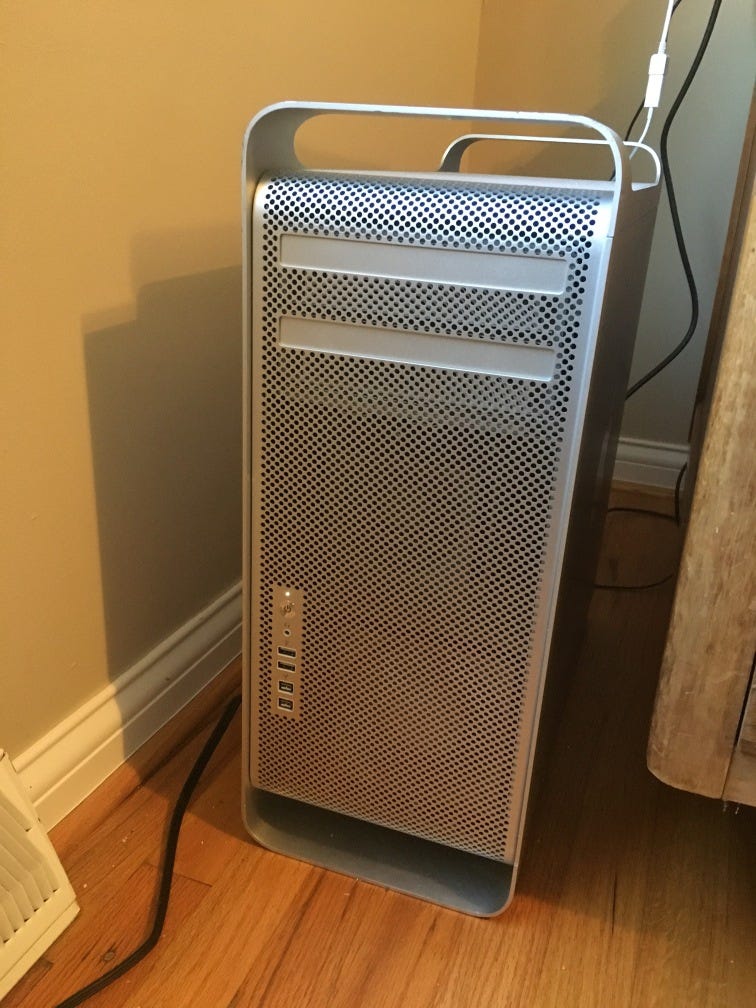Computing and My Money vs. OSU Money
The picture above encapsulates a lot about my previously-discussed transition from Ohio State University to Kernmantle Group. For the past 15 years, all of personal computing has been done on OSU computers, and the majority of them have been MacBooks.
On the left is a 13” MacBook Retina (early 2015), i5, 8GB RAM, and 512GB SSD, which cost $2200. In front of it is a 12.9” iPad Pro 32GB, which with the Apple Pencil, costs $850, for a total of $3050. This has been my OSU setup since the iPad Pro was released, and this laptop, and a 13” Retina i7 prior, have been my steady travelling buddies for the last 5 years. While $3k seems like a lot, honestly, its not that much when it’s someone else’s money. And while that sounds pretty callous, it is entirely true.
However, last December, I left OSU and so had to replace my computers. In doing so, I learned a few things, but before I get to that, let’s talk about how got to here.
To replace my OSU setup in moving to Kernmantle, I needed a few things:
Sufficient disk space and computing power for everything from crunching lots of data to editing speaking videos, and the ability to drive at least 2 large (WQHD–2560x1440) monitors.
On the road, a laptop with enough power to run RStudio to update my charts and plots, and do it on the machine, not via RD back to my home office.
Pen-based input. For me, the iPad Pro has been excellent. I had a Dell 2-in-1 about 10 years ago which was a so-so laptop but it really made me love pen-based note-taking. In 2007, I travelled to South Africa for 10 days on a research project, during which time I conducted a dozen or so interviews. In OneNote, I could quickly write notes while also recording the audio for later review.
Small and light. I already travelled a lot, and with Kernmantle, I’m going to be travelling significantly more. While the 13” Retina + iPad Pro aren’t large, combined with their chargers, I can feel the weight in my briefcase/backpack.
Step 1: Get a desktop for the home office.
I realized pretty quickly that the best way to get all the power and disk space at home was a desktop Mac. However, the new MacPros are entirely prohibitive. They start at $2699 and don’t have the storage space that I’d like to have, so it would be at least $3000 to get the computer that I’d need. The next option was to build a Hackintosh. But as this was going to be my main computer, the inevitable tinkering was a definite worry. In researching how to build a Hackintosh, I found that many of the tips and tricks came from users with older MacPros. Apparently, many professionals still use the ‘cheese-grater’ MacPro models that were discontinued in 2012. Those made from 2009 to 2013 can still run the latest operating system, they can hold up to 4 internal drives and they are highly expandable for video cards, etc. After some looking on eBay, I ended up with a Quad 3.2GHz Xeon machine for $400. I added a 512GB SSD and two 3TB hard drives and had a fast, capable machine that could easily run a 1080p monitor as well as my new ASUS WQHD monitor.
Next time, I’ll discuss the hardest part: the travelling office.


